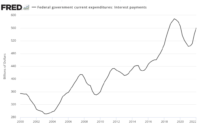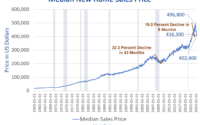Regional Banks Battle for Deposits With Tougher US Rules Looming
(Bloomberg) — The biggest US banks are facing tougher competition for deposits and shelling out more to keep them. That doesn’t bode well for their smaller peers.
Most Read from Bloomberg
America’s regional lenders begin reporting second-quarter earnings this week after months of upheaval laid bare a collection of balance sheet weaknesses that took a handful of them down. Some, like KeyCorp and Zions Bancorp, have already warned of revenue declines amid deposit pricing pressures, but the acknowledgment Friday by JPMorgan Chase & Co., Wells Fargo & Co. and Citigroup Inc. that they’re facing such pressures underscores the toll it could take on their smaller, often less-diversified rivals.
Regional banks have been in a battle with higher interest rates that’s forced them to pay more on customer funds while eroding the value of bonds they once saw as a reliable source of liquidity. For some, the pressures were too much: Silicon Valley Bank, Signature Bank and First Republic failed while others scrambled to shore up funds as spooked depositors yanked their cash. PacWest Bancorp, for one, embarked on a series of asset sales as it weighed strategic options.
Read more: Truist Joins Regional Banks Warning on Quarterly Revenue
The prospect of a further rate hike this month offers little sign of a reprieve from those pressures, prompting analysts to forecast some tough results. Adding to the pain is the likelihood that smaller or mid-sized banks will be subject to more stringent regulation amid proposals by the Federal Reserve’s top banking regulator Michael Barr in the wake of those recent bank failures.
“As we go through earnings season, the attention is going to shift back from deposit levels to deposit costs, and the attention is going to shift back to net interest income,” Morgan Stanley analyst Manan Gosalia said in an interview. “These things are heading the wrong way.”
Interest expenses at banks have been rising as they strive to hold onto depositors seeking a greater cut of the Fed’s rate hikes. Citigroup is increasing what it pays out, Chief Financial Officer Mark Mason said after the bank reported earnings. At Wells Fargo and JPMorgan, interest expenses climbed a staggering 465% at each of the firms in the second quarter.
Read more: Big Banks Are Finally Giving Depositors a Cut of Fed Windfall
And they might not quite be hitting that goal to keep hold of deposits yet, either: Deposits had slipped at Wells Fargo and Citigroup by the end of the second quarter from the end of March. They would have been down at JPMorgan, too, but for its rescue purchase of First Republic Bank in May.
Cleveland-based KeyCorp said in June that its net interest income would probably drop 12% this quarter — worse than the 4% to 5% it previously forecast — as the lender pays more to hold onto depositors. In its first quarter earnings, the firm said that interest-bearing deposit costs had increased 62 basis points from the prior period.
Zions Bancorp., based in Salt Lake City, Utah, also said its net interest margin will fall this quarter. The figure, which compares how much a bank earns on loans with what it pays depositors, will shrink to about 2.85% from 3.33% in the first three months of 2023, it said in June.
“From a fundamental perspective, the outlook is challenging,” Goldman Sachs Group Inc. analysts led by Ryan Nash wrote in a note. “Deposits are shrinking, deposit costs continue to rise more than expected, mix shift out of non-interest bearing is likely to continue and asset re-pricing benefits are not enough to offset the pressure.”
The KBW Regional Banking Index is down about 21% this year, in a first half where short sellers betting against the lenders piled into the sector sparking waves of volatility.
‘Significant headwind’
As the turmoil that began with Silvergate Capital Corp. escalated into a crisis of confidence among depositors, many regional banks have been forced to rely on more costly or less sticky sources of funding — which in turn harms profitability. For some, these costs didn’t start rising until late in the quarter, meaning investors are yet to see what the landscape of higher funding costs looks like.
“We expect banks are also using higher cost brokered CDs to supplement organic deposit growth,” Morgan Stanley analysts led by Gosalia wrote in a note. “We view accelerating deposit costs, not accelerating deposit outflows, as the most significant headwind to earnings for the next several quarters.”
Read more: ‘Hot Money’ Is Piling Up at Banks and It’s Starting to Take a Toll
An additional headwind to lending activity for some regional banks could come from regulators. The Federal Reserve’s Barr is proposing changes that would require banks to hold more capital to weather economic turbulence.
The changes would also lower the threshold for firms subject to the rules to include banks or bank holding companies with more than $100 billion in assets. Currently, such restrictions only apply to firms that are globally active or have $700 billion or more in assets, Barr said earlier this month.
What Bloomberg Intelligence Says:
“Recent failures of several US regional banks will warrant a regulatory response, with heightened capital, liquidity and stress testing changes almost certainly in the cards. Regional banks above $100 billion in assets may also be required to issue new long-term debt, yet any proposal could take at least two-three years to fully implement.”
-Herman Chan, BI senior industry analyst, and Nathan Dean, BI senior government analyst
Another pressure point is regional banks’ exposure to commercial real estate, assets which have been battered by rising interest rates just as the pandemic emptied offices. According to Fitch Ratings, banks with less than $100 billion in assets are more vulnerable to those headwinds, given their higher exposure as a percentage of assets and total capital, the ratings firm wrote in May.
Read more: Wall Street’s New Zombies May Well Be Regional Banks
“With respect to real estate, regional banks are especially exposed not so much to value or even to credit risk as much as they are just to rate risk,” Gavriel Kahane, chief executive officer and co-founder of real estate investor Arkhouse, said in an interview. To the extent that there’s a need for liquidity, “banks will need to realize out of these longer-term assets to meet those short-term liabilities and deposit withdrawals — and that could really cascade into a big problem,” he said.
–With assistance from Bre Bradham and Paige Smith.
Most Read from Bloomberg Businessweek
©2023 Bloomberg L.P.
[ad_2]
Source link


